The role of boreal fires in climate change in four graphics / 03
For Summit County, climate is a public health priority / 06
In the news: highlights / 07

The role of boreal fires in climate change in four graphics / 03
For Summit County, climate is a public health priority / 06
In the news: highlights / 07

Comprehensive study shows diverse chemical changes in key rivers, indicating multifaceted climate influences
Climate change is having profound effects on the chemical composition of large Arctic rivers, signaling changes both on land and in the coastal ocean, according to new international research examining chemical signatures in rivers across Canada, Alaska and Russia.

The study, the result of a two-decade effort by the Arctic Great Rivers Observatory, analyzed nearly twenty years of water chemistry and discharge data collected from six rivers that comprise 60 percent of the Arctic Ocean watershed.
The researchers tracked river water ions, key nutrients, and dissolved organic carbon, among other indicators. They found that chemical concentrations changed substantially over the past two decades, but trends across chemical groups were different, with some increasing, some decreasing, and others showing little change.
The international scientific collaboration tracked river water ions, key nutrients and dissolved organic carbon among other metrics. Chemical concentrations changed substantially over the past two decades, but trends across chemical groups were different with some increasing, some decreasing, and some showing little change.
“The only way that this divergence in trends is possible is if multiple factors of change are being brought to bear on the Arctic system at the same time,” says Woodwell Research Assistant, Anya Suslova and co-author on the paper. “We know that permafrost is thawing, vegetation is changing and moving northward, and processing of nutrients and organic matter may be happening more quickly. Global climate change appears to be causing many systems that are critical for ecosystem function to
change at the same time—and that change is showing up in the chemical composition of river water.”
Key nutrients observed in river water are declining, according to the study. This trend suggests warming temperatures are increasing biological uptake of nutrients on land or in aquatic ecosystems, leading to an overall decrease despite factors like wildfire and permafrost thaw releasing more nutrients into the waterways.
ArcticGRO represents a partnership between researchers at Woodwell Climate Research Center, University of Alberta, Marine Biological Laboratory, Florida State University, and University of New Hampshire, as well as scientific and community collaborators in Siberia and the North American Arctic.
“The success of this study is largely due to its collaborative nature,” says Dr. Max Holmes, Woodwell Climate President and CEO, and founder of the ArcticGRO project. “Without the dedication of scientists and community members across the Arctic, we never would have been able to generate the comprehensive dataset that allowed us to uncover these insights.”
Because trends in river water chemistry are not always acting in the same direction, Dr. Holmes and Suslova say the study will help give scientists a blueprint for thinking about how Arctic change will play out.
Learm more about Artic Great Rivers Observatory (ArcticGRO) at: https://arcticgreatrivers.org
Tributary of the Yukon River in Alaska. / photo by Anya SuslovaUsing a new higher-resolution dataset, generated as part of NASA’s Arctic-Boreal Vulnerability Experiment (ABoVE), Potter and his co-authors created a map of burned area across the boreal region. The researchers combined satellite imagery with observations from the largest database of boreal field studies, which allowed them to calculate emissions from both vegetation burned aboveground, and organic matter in the soils that burned belowground.
The results show that the overwhelming majority of carbon emissions from boreal fires—over 80% of total emissions in most places—comes from soils rather than trees. Despite the dramatic imagery of burning forests, most of the real damage is happening below the ground.
 Sarah Ruiz Science Writer Christina Shintani Cartographer
Sarah Ruiz Science Writer Christina Shintani Cartographer
When boreal forests burn in the Far North of the U.S. and Canada, the whole world feels the impact. From communities evacuating from the blazes, to smoke clogging the air thousands of miles to the south, to the release of carbon emissions that accelerate climate change, boreal forest fires are a global issue.
Research from Woodwell Climate has recently expanded our understanding of the scope of impact that boreal fires have. A new paper, led by Research Associate Stefano Potter, quantified emissions associated with fires across most of boreal North America, shedding light on the dynamics of boreal fires and climate change. These four graphics explain.
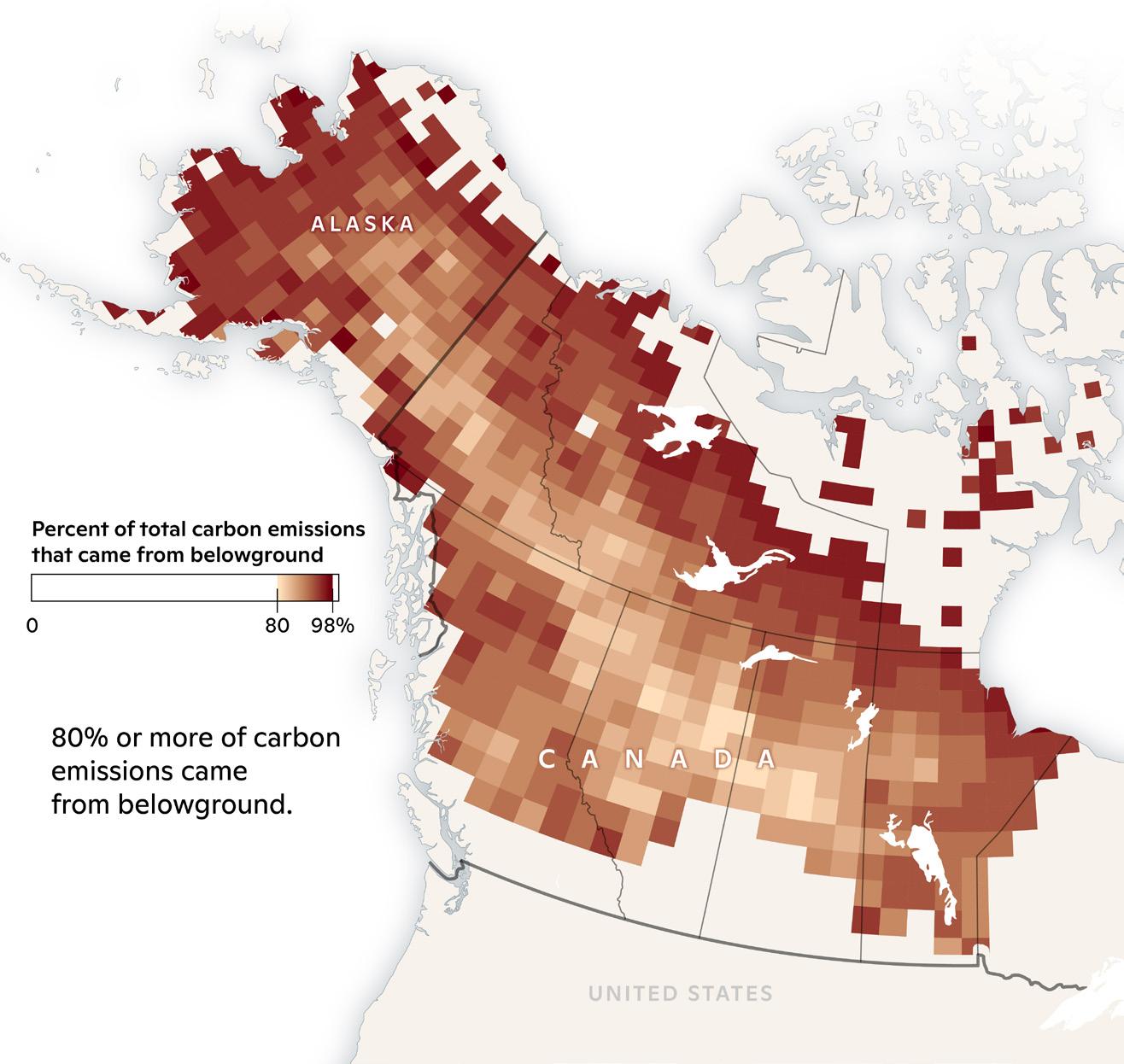 Researchers study burn severity and consumption immediately after a fire. / photo by Dale Haggstrom
Researchers study burn severity and consumption immediately after a fire. / photo by Dale Haggstrom
That finding on its own was not surprising to researchers, as the majority of carbon in boreal forests is stored below the ground. However, the fact that the overwhelming contribution of belowground carbon to fire emissions is being left out of existing global fire and climate models, means we’re drastically underestimating carbon emissions from Arctic and Boreal environments.
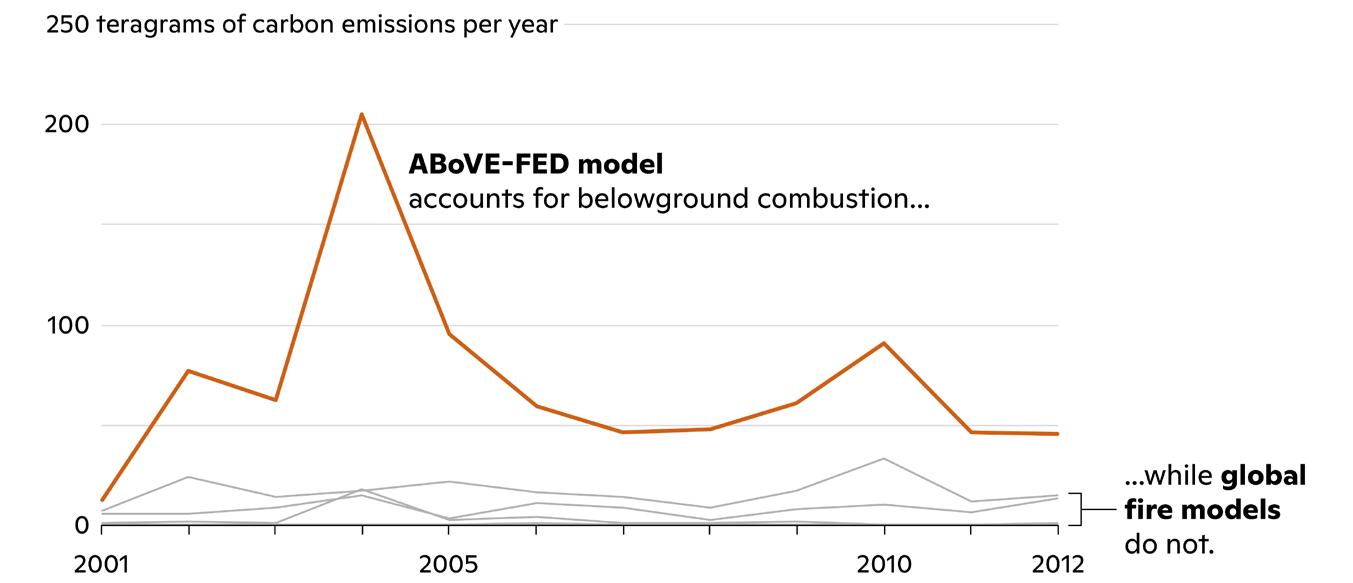
“A large reason for that is because the [existing] models are not detecting the belowground carbon combustion, which we are modeling directly,” says Potter.
Potter and the team working on the paper were able to accurately model belowground carbon loss because of their machine learning approach and the abundance of available field measurements in their dataset.
Accurately representing these numbers in global fire models is critical, because these models are used to plot climate trajectories and inform carbon budgets, which tell us how much we need to cut emissions to stay below temperature thresholds like 1.5 or 2 degrees C.
It is becoming more urgent to get an accurate understanding of boreal emissions, because boreal fires are becoming larger, more frequent and more intense. Burned area has increased as fire seasons stretch longer, return intervals between fires shorten, and single ignitions can result in massive blazes that burn further and deeper and cause greater carbon loss.
In 2023, for example, while the number of ignitions has been lower than most years since the 1990s, burned area as of August has far surpassed any year in the past three decades.
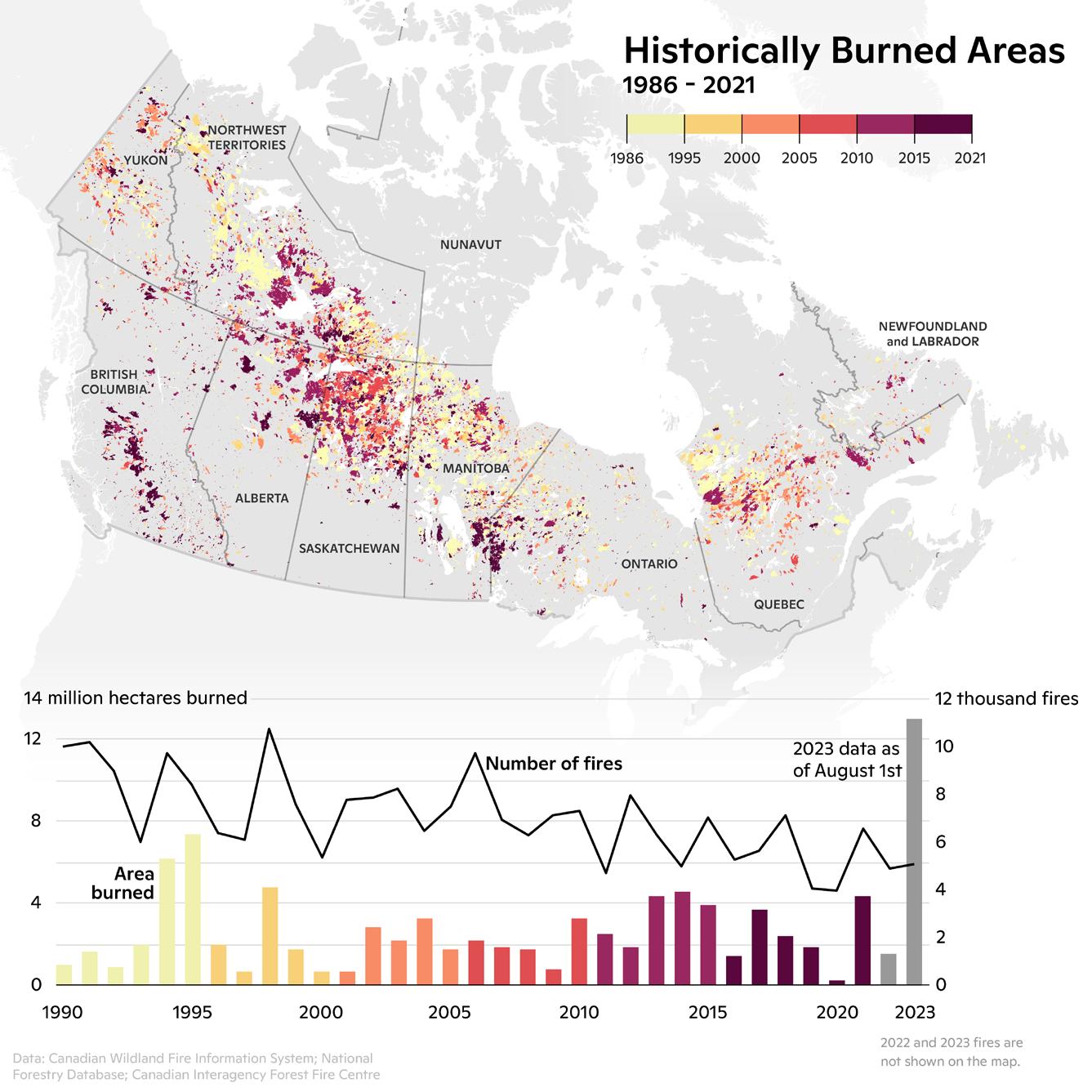
Ultimately, preventing carbon loss from boreal forest fires will require bringing down emissions from other sources and curbing warming to get fires back within historical levels. But preventing boreal forests from burning in the short term can offer a climate solution that could buy time to reduce other emissions.
A collaborative study between Woodwell Climate and the Union of Concerned Scientists, published in Science Advances, modeled the cost effectiveness of deploying fire suppression in boreal North America and found that actively combatting boreal fires could cost as little as 13 dollars per ton of CO2 emissions avoided—a cost on par with other carbon mitigation solutions like onshore wind or utility-scale solar. Informed by this data, the U.S. Fish and Wildlife Service has decided to start combating fires in Yukon Flats National Wildlife Refuge, not only when they present a threat to human health, but also with the intent of preventing significant carbon losses. Yukon Flats is underlain by large swaths of carbon-rich permafrost soils, at risk of thawing and combusting in deep-burning fires.
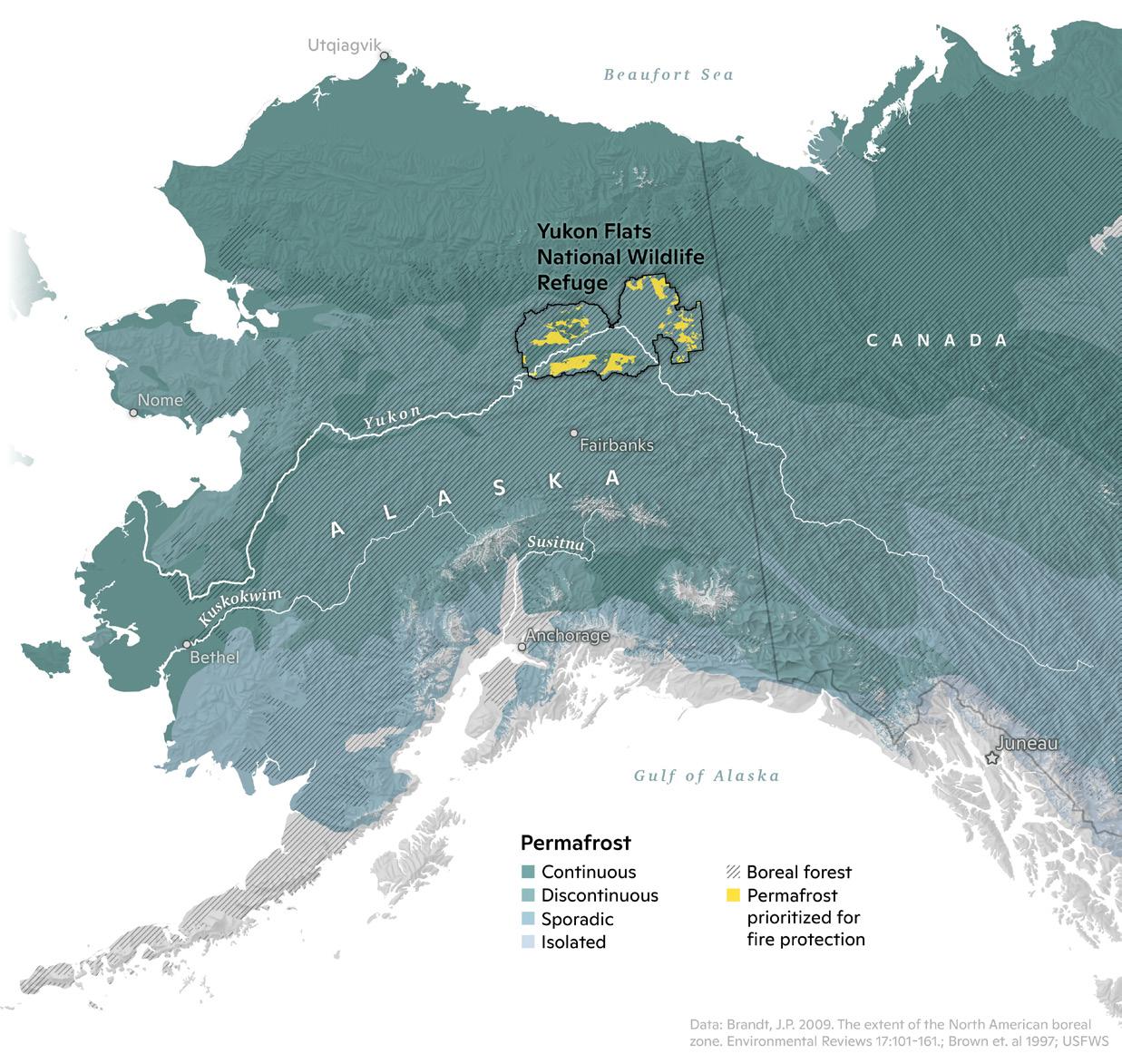
Deepening our understanding of the complex boreal system with further research will help inform additional strategies for bringing emissions under control, preventing devastating fires that threaten human health both regionally, and across the globe.
Last month, Patrick Murphy, Dr. Kyle Arndt, and Jess Howard of the Permafrost Pathways team were in Mittimatalik (Pond Inlet), Nunavut to meet with community members, local decision-makers at the Mittimatalik Hunters and Trappers Organization and Mittimatalik Hamlet Office, and Ikaarvik—an Indigenousled organization creating opportunities that allow Northern Indigenous youth to empower themselves for self-determination in Arctic research and decision-making. Ikaarvik hosted a four-hour workshop in the town library where they provided guidance on ethical community engagement and equitable Arctic research and discussed community priorities and opportunities for collaboration with the Permafrost Pathways project, including the future installation of an eddy covariance tower.
 left to right: Damian Enoogoo (Ikaarvik), Patrick Murphy, Dr. Kyle Arndt, and Jess Howard. / photo by Shelly Elverum (Ikaarvik)
left to right: Damian Enoogoo (Ikaarvik), Patrick Murphy, Dr. Kyle Arndt, and Jess Howard. / photo by Shelly Elverum (Ikaarvik)
Summit County, Utah is preparing for a changing climate.

The high-elevation county boasts a strong winter sports economy, vast swaths of national forest and agricultural land, and a population of 43,000 people that stand to be affected by climate-driven changes. The risks to the county’s health and economy from climate change were outlined in a recent report by Woodwell Climate, and shared with the community through the first event in a series of climate change and public health panels. The risk assessment was completed as a part of the Center’s Just Access initiative
to provide free climate risk insights to municipalities across the globe, in order to equip them for the changes ahead. Working with members of Summit County’s Sustainability Department, as well as members of the community at large, the Woodwell team targeted three major climate risk variables for analysis— drought, water scarcity, and wildfire.
According to Emily Quinton, Sustainability Program Manager for Summit County, these risks are ones the county is already concerned about, based on existing conditions, but wanted to know what that would mean for them in coming decades.
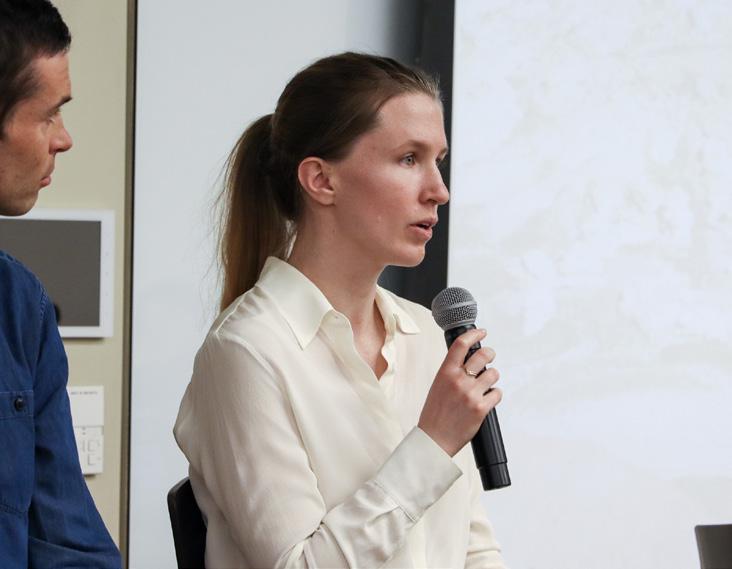
“We have some good baseline knowledge about the risks we are facing already,” Quinton said. “What was different and new that the Woodwell assessment could offer was those much longer-term future projections.”
In Summit County, the Sustainability Department is a subset of the Public Health Department, which encouraged the risk assessment to delve into the ways in which climate risks affect the health of county residents. Changes in water
availability were a particular concern for the department.
The report found that the northern and easternmost portions of the county are most likely to be affected by drought. Summit County is already experiencing severe drought conditions 40% of the year; that number is expected to increase to 50% by midcentury.
Water scarcity will also increase. Driven by both increasing demand from the population and decreasing availability, water scarcity in most communities within Summit County is expected to be at 189% by 2030—meaning demand will be nearly twice that of available supply.
“With the drought and water scarcity topics,” said Quinton, “making the connection between how a decrease in water quantity will place risk on water quality was important. Monitoring water quality is a really crucial responsibility of the Public Health Department.”
Woodwell Research Assistant, Darcy Glenn, who worked previously in Summit County’s Sustainability Department and helped facilitate the
top: Along the Weber River near Oakley, Utah / photo by Tom Kelly (CC BY-NC-ND 2.0) left: Darcy Glenn speaks at panel event in Summit County, UT. / photo by Bailey Edelsteinproduction of the report says, “If you don’t have any water in your wells, water quality goes down because you don’t have enough to dilute any contaminant that might be a problem.”
Summit County currently grapples with wildfire threat as well. Wildfire danger days—in which temperature and moisture conditions make fires more likely to burn out of control—will become a more common occurrence, leading to fires that cause more evacuations, damage, and air quality concerns. The majority of the county will add eight or more wildfire danger days to their year by the end of the century.
Public health can be a less polarizing context in which to discuss climate risks publicly. Despite the political nature surrounding climate change in some
regions, Glenn notes public health can serve as a lens most people relate to and take seriously.
“It can be hit or miss on climate change, but if your kid has asthma, you want to know about your air quality. Changes in the environment, whether people acknowledge climate change or not, align with things they’ve seen,” says Glenn. “So we’re trying to approach the topic in a way that’s accessible and start a conversation that’s welcoming to the whole community.”
After the completion of the assessment, Woodwell Risk team members presented the information to the Summit County Board of Health, then opened up communications with the public. In May, the county’s Health Department hosted the first of three planned events in a speaker series, focused on sharing
the results of the report to help county residents better understand the extent of risk where they live. Glenn spoke alongside local climate experts and took questions from attendees.
The next two events in the series will discuss the physical and mental health impacts of climate change, as well as some potential adaptation solutions. According to Quinton, these events will aid the county in developing plans for resilience that address the top concerns of the public.
“Climate preparedness can’t happen without an understanding of what the potential risks are. The Climate Risk Assessment and the public events feel like important steps to more directly integrate climate change into the preparedness work Summit County is already doing,” says Quinton.
September 18–22 | Climate Week NYC is an important opportunity to connect with partners and explore new possibilities. Woodwell Climate experts will be participating in multiple events throughout the week.
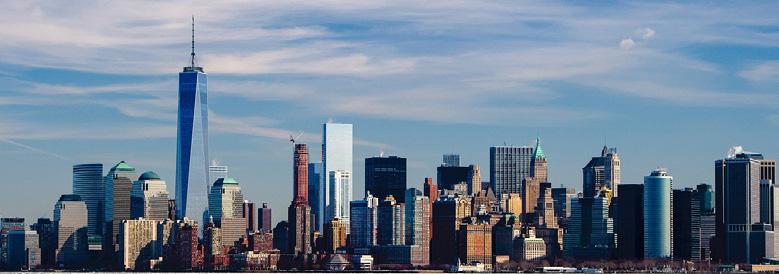
As extreme weather remains prominent, Dr. Jen Francis continues to be a sought-after expert source for major news outlets including Associated Press News, Financial Times, Inside Climate News, and WBUR.
Dr. Jen Francis was featured on an episode the PBS Terra show Weathered discussing the AMOC (Atlantic Meridional Overturning Circulation)—ocean currents that regulate and transport heat around the planet.
Dr. Jen Francis was interviewed by CAI to provide the climate context for the recent tornadoes in Cape Cod.
Dr. Foster Brown was interviewed on TV Acre to explain the impacts of El Niño on the region (Portuguese).
Dr. Chris Neill was featured on an episode of The Enterprise’s podcast, The Upper Cape Catch, discussing wastewater’s nitrogen problem in Cape Cod.
Dr. Zach Zobel was quoted by CNBC in an article about whether utilities are a riskier investment due to climate change.
A recent episode of Wellington Management’s podcast, WellSaid, hosted Dr. Zach Zobel and Wellington’s Chris Goolgasian for a conversation about the climate adaptation research and investing landscape.
Dr. Anna Liljedahl was quoted by Philanthropy News Digest about the significance of expanding the Permafrost Discovery Gateway through a recent $5M Impact Challenge grant from Google.org. ASU News published a press release covering this new development, and Inside Philanthropy interviewed her.
Science quoted Dr. Jon Sanderman on the uncertainty of notill agriculture’s climate benefits in an article about Indigo, a company paying farmers to trap carbon in their soils.
An article from Amazonia Real quoted Dr. Ludmila Rattis on how increased temperatures are making rainfed agriculture unfeasible in areas of Brazil (Portuguese).
A blog post on Siam News noted collaboration between Oregon State University researchers and Drs. Elchin Jafarov and Brendan Rogers on modeling large-scale permafrost thaw.Please help us to conserve paper. To receive this newsletter electronically, please send your email address to info@woodwellclimate.org.
woodwellclimate.org/give
@woodwellclimate
#sciencefortheworld

Donations play an important role in securing the future of Woodwell Climate Research Center’s work—and help safeguard the health of our planet for generations to come.